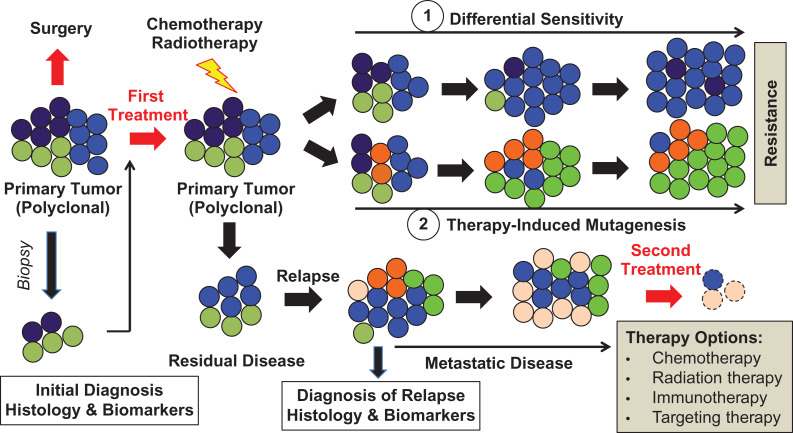Figure 3.
Role of tumor heterogeneity in biomarker prediction and tumor resistance to clinical therapy. Initial cancer diagnosis and first treatment depends on initial cell and molecular characterization, derived from a small tumor fraction (biopsy, here figure shows a complete representation, but in some cases, it may be biased). In most cases, the current first-line treatments can successfully eliminate dominating cancer clones, with the cost of selecting resistant tumor clones through either differential sensitivity (1) or therapy-induced mutagenesis (2). These resistant clones are capable of driving disease progression and eventually metastasis. Hence, the clonal composition of metastatic lesions may significantly differ from clones in the primary tumor. As a result, initial treatment choice may not be effective in progressive metastatic disease. This necessitates a new diagnosis and additional comparative steps after relapse, prior to second and usually combined treatment options (i.e., immunotherapy, selective pathway component targeting and/or gene therapy) (Adapted from Tellez-Gabriel et al., 2016; doi:10.3390/ijms17122142).

